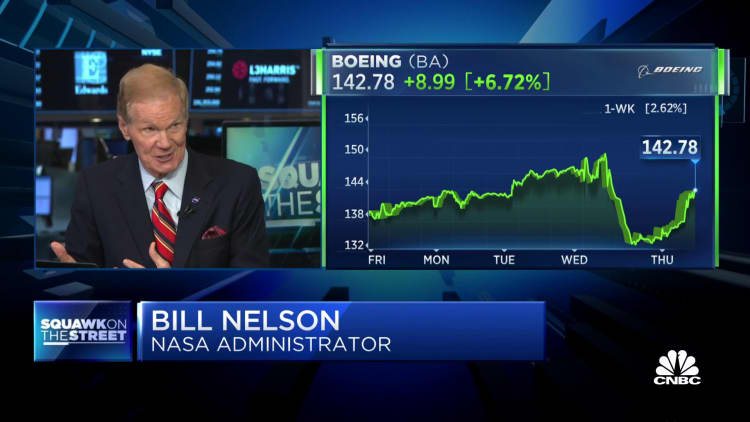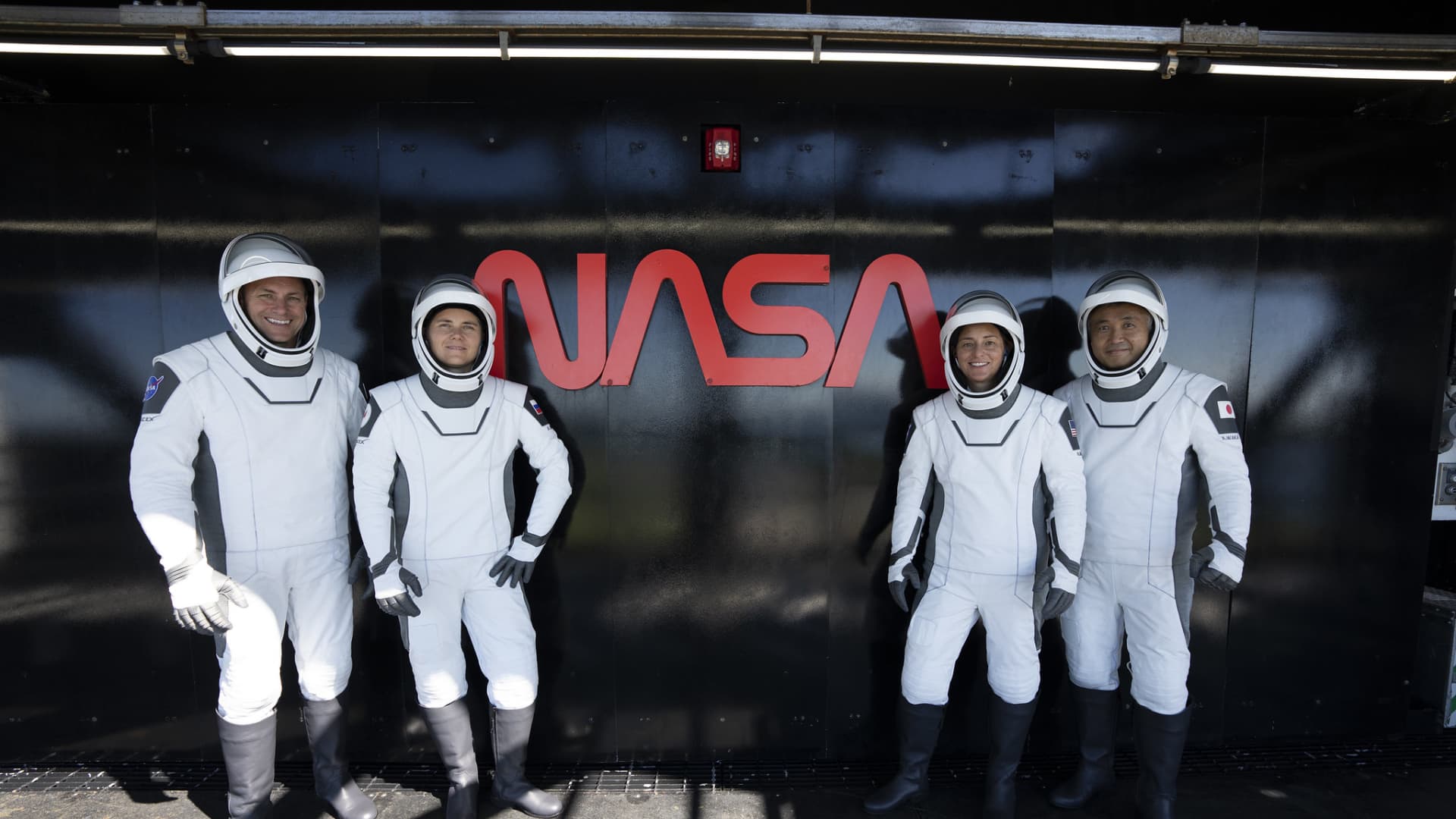Astronauts flying on SpaceX's Crew-5 mission for NASA stand in front of the agency's worm logo during a countdown dress rehearsal on Oct. 2, 2022, at
Astronauts flying on SpaceX’s Crew-5 mission for NASA stand in front of the agency’s worm logo during a countdown dress rehearsal on Oct. 2, 2022, at Kennedy Space Center in Florida.
SpaceX
The National Aeronautics and Space Administration on Thursday said its annual economic output is three times the size of its yearly budget.
In a newly released study, NASA looked at fiscal year 2021, in which the agency had over 19,000 employees and a federal budget of $23.3 billion. According the report, NASA missions, research and more “generated a total economic output of more than $71.2 billion,” with the agency’s work supporting about 340,000 jobs in all 50 states and Washington, D.C.
“We’re trying to point out just how penetrating, and almost incalculable, this [agency’s] economic impact is,” NASA Administrator Bill Nelson told CNBC.
NASA’s work in aerospace and space spans from operational programs, such as the International Space Station and Commercial Crew, to its plan to return astronauts to the moon known as Artemis.
Sign up here to receive weekly editions of CNBC’s Investing in Space newsletter.
And, as effective as NASA’s return on taxpayer dollars may seem, Nelson argued that the economic impact report actually undersells the agency’s value to the U.S. economy. He cited examples like pharmaceutical research on the space station, calculating soil moisture for agriculture, or using satellites to identify trees that may be diseased and could cause a forest fire.
“Will people understand it? A lot of people won’t understand it, and they’ll take it for granted,” said Nelson, a former U.S. senator for Florida.

In several areas, NASA has pivoted over the past decade from owning and operating space technologies, to buying tech as a service from the private sector. Examples include SpaceX flying astronauts to-and-from the ISS, or a small cohort of companies building and running the low-cost lunar CAPSTONE mission. While a macroeconomic shift in the U.S. is seen as a major reason for the cooling of the investment pipeline into space companies, billions continue to flow.
“Space is the place, and it’s also a hot economic investment area,” Nelson said.
Nelson noted that the space sector remains a “high risk” endeavor. He pointed out that Masten Space, one of the companies that won a NASA contract to deliver cargo to the moon, filed for bankruptcy earlier this year – but its assets were acquired by another lunar-focused U.S. space company, Astrobotic.
“It’s a high risk proposition because you’re doing new and daring things,” Nelson said.
But the NASA chief didn’t share any major concerns about the health of the space economy, including NASA’s partners in the private sector, noting that the agency’s recent shift toward more competitive, fixed-price contracts represents a “shared risk” with companies.
www.cnbc.com
